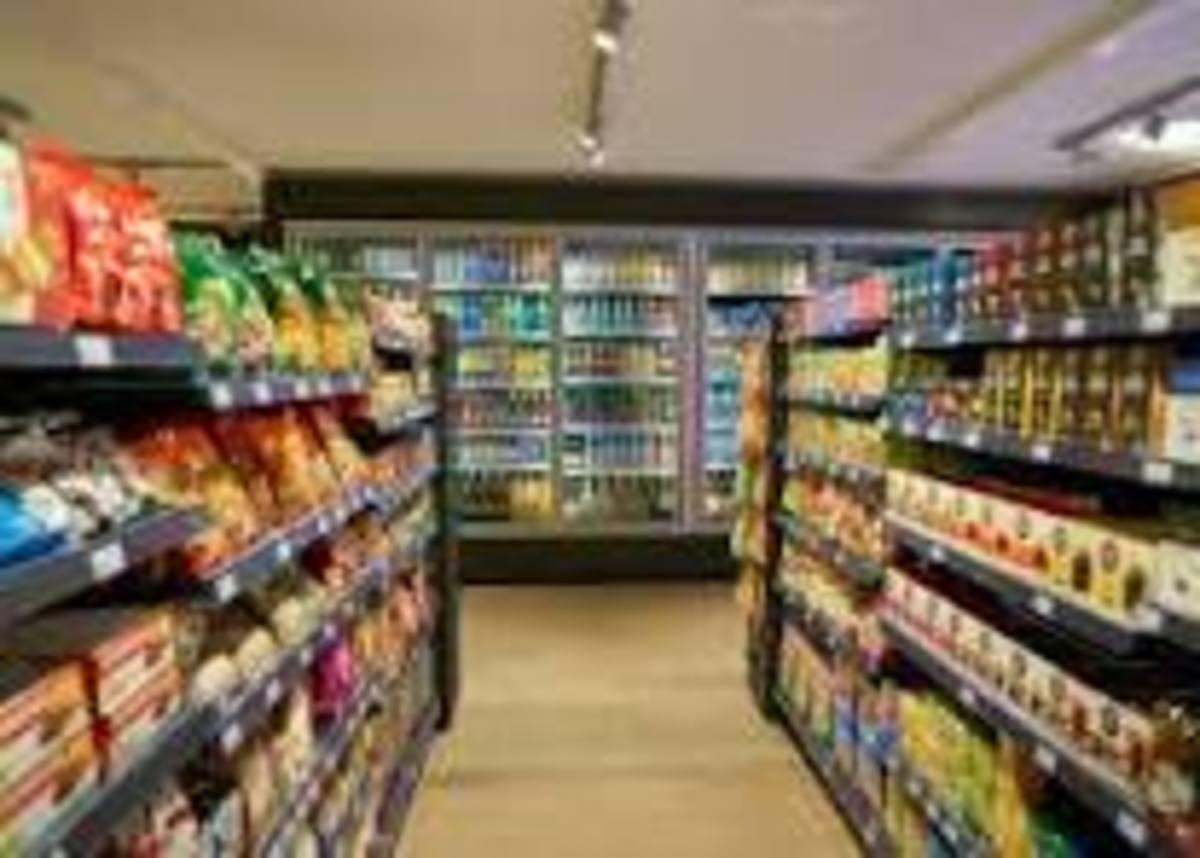- HubPages»
- Personal Finance»
- Frugal Living»
- Household Expenses
How I halved my grocery bill

Spend less on on the weekly shopping
It is possible to reduce your weekly grocery shopping bills. Out family halved our grocery bill, by taking the following reasonably simple steps.
Meal planning
If you want to spend substantially less on grocery shopping it's important to only spend money on what you need.I mean exactly what you need.
Spend a couple of minutes planning your meals for the week rather than simply heading out to the shops for a trip down the supermarket aisle. With planning, you will find that the quantities that you buy will reduce and you will spend less on your groceries.
Many people do one major supermarket shop a week, so start by writing down the days of the week on a piece of paper. There is probably one meal per day that you would consider the main cooked meal for your family. For most people this will be dinner time. So write down what you want to have for dinner, or you main daily meal, for each day of the week.
If you do this meal planning carefully, you can save time as well as money. This is because you can factor in using leftovers for meals the following day. For example, one night you might cook chille con carne with rice or mashed potatoes. The next night you can use the left over chile con carne in tacos or enchiladas. Meal planning also has the potential to improve you diet. You gain a better perspective of what you are eating in a week and can consume a wider variety of healthy eating choices.
When planning your meals, remember to check your freezer and cupboards for items that you may wish to use.
Once you have written down items required for your main meals consider other meals during the week, such as breakfasts and lunches. Write down what your family requires for these meals. Also, write down any other micellaneous supermarket items that you may need.
Once you have written down your requirements for the week, examine the list. When our family started doing this, we decided that some items we had been buying regularly were luxury items. These were mainly breakfast cereals and drinks. We decided that these "luxury" non essential items would be bought once a month. We buy these on the first week of the month for the ease of remembering when we can buy them again. Once these luxury items have been consumed for the month then we do not buy them again until the next month.
When you write down only what you require for each meal, you should find that a lot less goes into yoru shopping trolley. You will also find that writing down your weekly shopping list gets a lot easier with experience. The first few lists might take more time, but with practice you will get quicker at it. You may also find that you can carry over previous lists into other weeks.
Be thrifty with the amounts you buy
To further save money, monitor the quantity of food that you cook for each meal. Chances are that you are cooking too much, particularly if you find yourself regularly storing or throwing away left overs. When you cook side dishes, such as rice or vegetables, start to keep track of how much you cook and how much remains at the end of the meal.
When our family started to consciously track food amounts, I measured out the quantities that I was cooking for a few meals. I realised that I was consistently cooking too much for many of our meals. Now, I have worked out approximately how much pasta and rice etc I need to cook to suit my family for one night's main meal. I've reduced the amount of pasta I use by approximately a cup for each pasta meal.
We also looked at our meat consumption. Meat can be quite expensive. We decided to try to deliberately cut down on our meals that incorporated meat and have more vegetarian based meals. Not only is this good for our weekly shopping budget, it is also good for our health and waist lines.
We aim to buy one red meat, such as beef, and one lean meat, such as chicken per week. I find that generally, with careful planning, I can make two meals out of each of the meats. This means we have four meat based meals per week. On the other three days of the week, we have vegetarian meals, or meals that are substantially vegetarian, as I might add in some small amount of meat, such as chopped bacon or salami to a pasta meal. I do encourage you to try this option as it has worked for our family, in terms of healthier feeling bodies as well as a healthier bank balalnce.
The weekly planning has also encouraged me to expand my cooking repertoire. I sit down for approximatley 10 minutes each week and browse through my recipe books before deciding what we want to eat.
Many items are not cheaper at the supermarket - so shop elsewhere
Many items, particularly toiletry items, are not cheaper at the supermarket. There is a premium placed on items because the supermarket chains hope customers will buy these items for convenience sake.
When our family started to really examine our lists we realised with some small organisational efforts we could make some substantial savings.
Now instead of buying toiletry items such as shampoo and toothpaste from the supermarket we go to a discount bulk store. For example, in Australia we have Chemist Warehouse and Priceline. Now once a month, I do a seperate shop at one of these outlets to buy all our toiletry items.
We also got sick of paying money for disposable nappies, which my daughter was still using at nighttime. We stopped buying them.
Previously our children had used cloth nappies during the day and disposable nappies at night, so this was not a huge transition for us. However, we had been using the disposable nappies at night beacuse they tended to be more reliable. Now our youngest daughter is toilet trained during the day, and the chances of nightime accidents are reduced, I have reverted to using padded night time underwear. Previously she had worn these during the day when she was being toilet trained. This does mean a bit of extra washing, but it is better for the environment as well as a substantial cost saving. I realise that for some people cloth nappies may not be an option, but I do encourage you to consider it.
In summary, careful planning has the potential to save you money as well as the added side benefit of increasing your health.
Thrifty ideas
- Cheap Home Cleaning Supplies
Keeping a clean house doesn't have to cost an arm and a leg. By using cheap or homemade cleaning supplies, you can cut your bill in half of what it used to be. Anyone can save valuable time and money following... - Non-Toxic Household Cleaning Supplies You Can Make Y...
In an age where - Wanna Cheap Meal? Dress-Up Those Cup Egg Noodles!
Wanna Cheap Meal? Dress Up Those Noodles! I have been eating noodles for years. All sorts of noodles and their peers under the skin, pasta. But it was only recently a friend introduced me to the skills of... - 12 Super Fast, Cheap and Easy Main Dishes
My fast, cheap and easy recipes have only 3 to 4 ingredients, and are enough for 4 people when served with a side dish. To anyone who thinks that you cannot cook, give these super easy recipes a try. For experienced but busy cooks, these are a breeze









